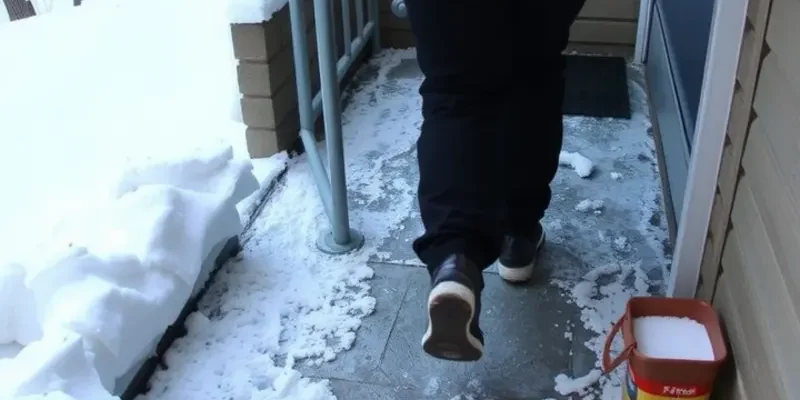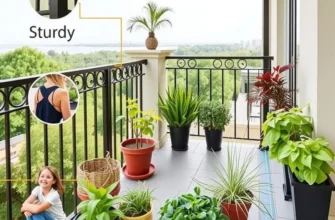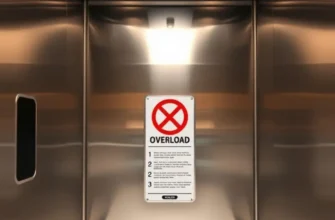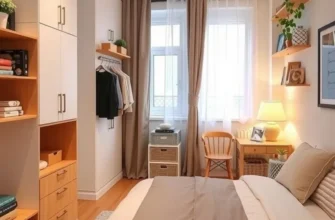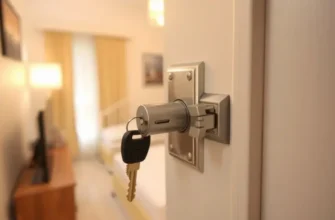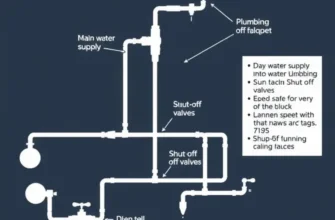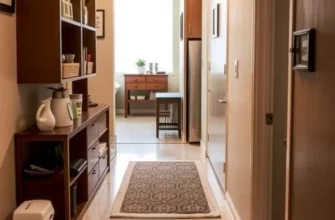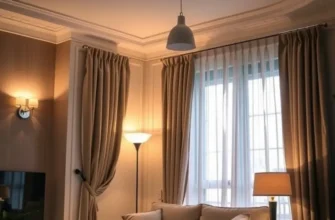As winter blankets the U.S. with snow and ice, renters face unique challenges regarding safety and maintenance in their apartments. From navigating slippery pathways to preventing ice dams, the winter season demands heightened awareness and proactive measures. Understanding how to manage icy conditions not only ensures personal safety but also helps protect your living space. This guide aims to empower renters with essential safety tips and maintenance solutions, offering peace of mind throughout the cold months. Whether you’re facing snowflakes in New York or icy winds in Chicago, this article equips you with the knowledge to tackle winter hazards efficiently and effectively, turning your apartment into a safe haven while the temperatures drop. Embracing practical solutions could be the difference between a minor inconvenience and a major mishap, so let’s delve into comprehensive strategies for staying safe and secure this winter.
Navigating Slippery Entrances and Exits
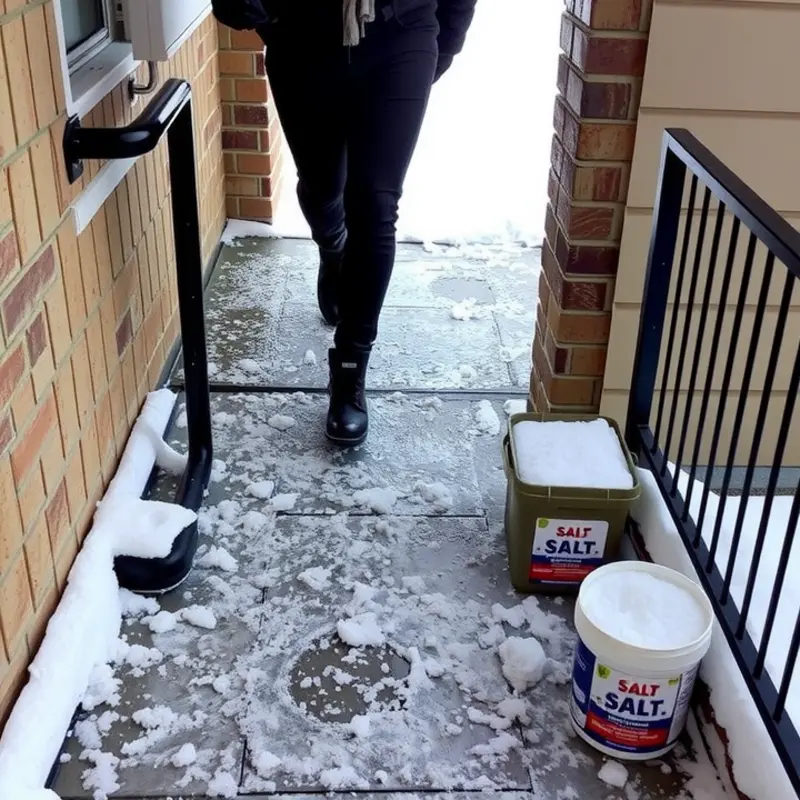
Winter creates challenges for apartment dwellers, with icy walkways being a significant concern. It’s crucial to equip yourself with practical strategies to navigate these slippery surfaces safely.
Invest in Appropriate Footwear
Selecting the right footwear can be your first line of defense against icy paths. Shoes with rubber soles and good treads provide better grip on slick surfaces. Avoid smooth-soled shoes that increase the risk of slipping. If you’re looking for more tips on practical apartment living, consider checking out this guide on renter-safe utensil storage.
Utilize Sand or Salt
Sand and salt are effective in increasing traction and melting ice. Keep a small bag of these materials handy, so you can scatter them on icy patches outside your entrance. Sand provides traction without melting the ice, while salt lowers the freezing point, effectively melting the surface ice while preventing further buildup.
Keep Pathways Clear
Regularly clear snow from entrances and exits to prevent ice buildup. Using a sturdy shovel, gently remove the snow without damaging steps or walkways. It’s beneficial to do this continuously during a storm to reduce the final workload and limit ice formation.
Communicate with Property Management
If you notice untreated or particularly hazardous areas, informing your property management promptly is essential. Be clear and specific about the location and nature of the hazards to ensure they can address the problem effectively. This approach not only protects your safety but also helps others in your complex.
Consider Temporary Mats or Carpets
Another practical tip is placing temporary mats or carpets at entrances to absorb snow and water from your shoes, reducing slippery spots indoors. Ensure these mats are secured to prevent tripping.
Be Mindful of Your Step
Finally, when walking on potentially icy surfaces, take short, slow steps to maintain balance. Keep your hands out of your pockets to help better distribute your weight and avoid sudden movements that could lead to falling.
By following these strategies, you can significantly reduce the hazards of icy walkways and entrances, ensuring a safer and more enjoyable winter season.
Preventing Ice Dams and Indoor Hazards
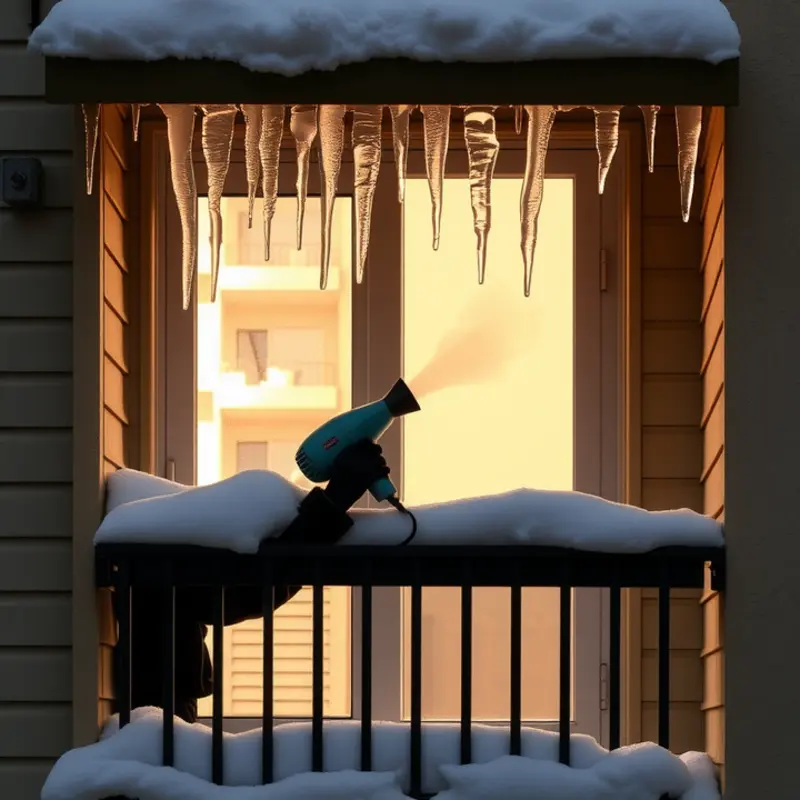
Winter’s beauty often comes with hidden dangers. Ice dams, for instance, can cause significant damage if not addressed. These occur when snow on your roof melts, flows to the edge, and refreezes, leading to buildup and potential leakage. To prevent this, ensure your roof is adequately insulated. Seal any gaps that allow warm air to escape to the roof, causing snow to melt. Keeping gutters clean is crucial as well; debris can exacerbate ice dam formation by trapping moisture.
Inside your apartment, ice melt from shoes and windows can create slip hazards and damage floors. Use absorbent mats at entryways to catch the melting snow from boots. Regularly check windowsills for moisture accumulation and wipe them dry promptly. Moisture can also seep in through exposed areas, so caulk windows and doors to minimize drafts and moisture ingress.
Another unseen threat is frozen pipes. The expansion of water as it freezes can rupture plumbing lines, resulting in significant water damage. Insulate pipes with foam sleeves, especially those in unheated areas such as basements or near exterior walls. During extreme cold, keep a trickle of water flowing through faucets. This keeps water moving and reduces the chance of freezing.
Winter-proofing your apartment is not solely about safety; it’s also about comfort and energy efficiency. Consider using heavy curtains to reduce heat loss through windows, which also minimizes the energy required to maintain a warm indoor environment. Draft stoppers can be placed at the base of doors to prevent cold air seeping in. For a simple DIY project, make your own draft stopper using fabric scraps.
Efficient heating practices can also lower energy consumption. Set your thermostat to a consistent, reasonable temperature, avoiding drastic fluctuations. Layered clothing and blankets can provide extra warmth without turning up the heat. If your home feels cold despite these efforts, consult your landlord to inspect the heating system. For more information on maintaining apartment facilities, you can refer to apartment water heater safety.
Engaging in these practices ensures your apartment remains a safe haven from winter’s chill, keeping it warm and hazard-free. With a little preparation and attention to detail, you can relax and enjoy the coziness of the season without worry.
Final words
Winter can be a beautiful season, but it also brings the risk of icy conditions that can lead to accidents and property damage in apartments. With these comprehensive safety tips, renters can confidently navigate their surroundings while ensuring their homes remain secure and cozy. It’s essential to stay proactive—addressing potential hazards in and around your living space can save you from costly repairs and accidents. Remember, your safety is a priority, and taking a few simple steps can make all the difference. Embrace the season and enjoy a cozy winter while ensuring that both you and your apartment stay safe amidst the freezing temperatures.

